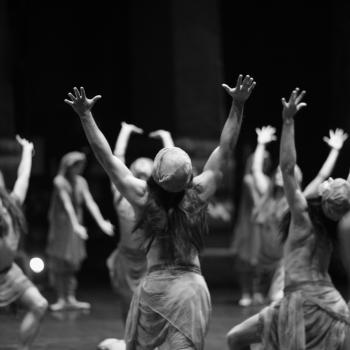Connor Wood
In the 17th century, John Locke argued that the only proper objects of scientific study were the primary qualities of matter – crisp measurements such as size and location. He and other thinkers thought that qualities such as color or temperature were too subjective for science. After all, I might think an apple was red, while you could call it orange or pink…but we’d have to agree on the measurement of its diameter! Hard measurements thus came to dominate scientific discourse, while subjective experiences were dismissed as irrelevant. But now, a group of Canadian researchers thinks that meditation might change this equation.
The dismissive attitude of most Western scientists towards subjective states has been one of the defining features of science since the Enlightenment. Subjective perceptions, the common wisdom goes, are so unreliable, so difficult to corroborate, and so generally unsupportable that it’s best to completely ignore them. Instead, scientists have taught their students to rely on objective measurements, such as the redshift of distant galaxies, the speed of sound waves, or the survival rates of sea urchins. This method has worked admirably for most scientific research, since it eliminates subjective bias and provides data that can be analyzed and manipulated mathematically.
But is subjective perception always inaccurate? Not necessarily. A team of researchers led by Kieran Fox of the University of British Columbia recently published a paper in PLoS ONE claiming that advanced Buddhist meditators have more accurate subjective perceptions and bodily awareness than novices, suggesting that subjective perceptions can be trained and thus may become more accurate with practice.
How, you might ask, is it possible to measure the accuracy of subjective impressions? Fox and his colleagues compared participants’ introspective, or subjective, reports of their bodily experiences with two objective measures of skin sensitivity. Decades’ worth of previous research had shown that different regions of the human body have radically different levels of sensitivity. For example, your lips are far more sensitive than your shoulder blades. This finding has been established by studies showing that the closer together you can feel two different stimuli without jumbling them into one sensation, the more sensitive a given patch of skin is.
Another method of ranking the sensitivity of different regions of the body is to look at the brain that does the feeling. The sensory cortex, which lines the junction between the frontal and parietal cortices in the brain, actually has discrete areas for processing sensations from a variety of different sources. For instance, one area of the sensory cortex is dedicated to the lips, while another is dedicated to the index finger, the forearm, the abdomen, and so on. Researchers use the size of the different areas in the sensory cortex to determine which areas of the body are more sensitive. Tellingly, the body parts that are more sensitive to the two-pinpricks stimuli tend to have correspondingly larger areas in the sensory cortex.
In their study, Fox and his colleagues used these established rankings of the sensitivity of different areas of the body to see how accurate their volunteers’ subjective perceptions were. Their volunteers were all trained in what’s called “body-scanning” Vipassana meditation, which trains practitioners to focus on sensations across the body as a method of developing mindfulness. But some of the meditators were much more experienced – with as many as 15,000 hours of accumulated practice – than others.
Importantly, the researchers didn’t apply any pinpricks, jabs, or pokes to the meditators. Instead, they merely let the participants do what they would normally do – meditate for a short period (about half an hour) while focusing on the subjective sensations and feelings that arose in different parts of their bodies. While meditating, the volunteers “scanned” their bodies, so that they spent a short period paying attention to their fingers, another period on their forearms, feet, and so on. Afterwards, the subjects were asked to rank 20 different areas of the body in order of their sensitivity relative to one another. The fact that there was no objective stimulus – such as a pinprick – meant that the meditators’ reports were purely subjective, arising strictly from their internal experience.
The researchers hypothesized that the rankings of the more experienced meditators would more accurately match the well-established, objective measures of skin sensitivity based on both sensory cortex size and pinprick sensitivity. Fox and his colleagues compared the meditators’ rankings of bodily sensitivity to three different objective measures: the aggregated findings of the two-pinpricks research, the aggregated sensory cortex findings, and a composite ranking that combined the two.
As they expected, the most experienced quartile of the meditators produced subjective rankings of skin sensitivity that were strongly correlated with the objective findings of decades’ worth of research – that is, the areas of their bodies they reported to be most sensitive tended to be those that two-pinpricks and sensory cortex studies had previously ranked as highly sensitive, and vice versa. But the reports of the least experienced quartile of meditators showed no correlation to the objective sensitivity research – inexperienced meditators were as likely to report high sensitivity in their shoulders or backs as in their fingertips.
Tellingly, previous research had shown that the style of meditation used for this study is associated with greater cortical thickness and gray matter density in the rostrolateral prefrontal cortex, also known as Brodmann Area 10 – a region of the brain that may be responsible for introspection and metacognition. Body-scanning meditation has also been associated with greater gray matter density in the insula, which helps govern bodily awareness. What’s more, the increased introspective accuracy of meditators showed a logarithmic curve. That is, more meditation experience was correlated with greater introspective accuracy, but this effect showed signs of leveling off after a certain amount of experience. This result is strongly reminiscent of learning curves in other disciplines, such as tennis, violin, or chess, suggesting that the experienced meditators had actually developed a specific skill over time – in this case, the ability to accurately sense and be aware of their bodies.
Of course, the finding that meditation may help people become more accurate in their subjective bodily experiences doesn’t mean that scientists are about to rush out en masse and collect subjective reports as data. Nor should they. But this research does open the door to the possibility that subjective, first-person reports are not automatically inaccurate or scientifically worthless, inasmuch as accurate introspection appears to be something that can be developed and learned over time. Perhaps scientists should continue to distrust most people’s subjective impressions – but remain open to those that come from people with rigorous training in meditation.












